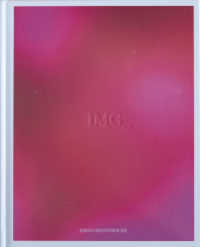- ホーム
- > 洋書
- > 英文書
- > History / World
Full Description
The shift from a hunting and gathering economy to a productive economy, based on the domestication of plants and animals, is one of the most important changes in human history. This change, which manifested itself in different forms and at different times in different areas of the Old and New Worlds, is still a subject of debate and discussion today. How and why does such a profound change occur in the relationship with the environment and the land? Could the arrival of foreign settlers with a mature and structured Neolithic cultural heritage be the cause of this change in the Mediterranean?The archaeological excavations conducted at the settlement of La Marmotta (Anguillara Sabazia, Rome, Italy), today submerged under the waters of Lake Bracciano, represents one of the most relevant Neolithic villages of the entire Mediterranean. The exceptional nature of this site is given by the conservation of the organic remains. Not only are the piles and architectural remains of the houses well preserved at La Marmotta, but so are small finds and fragile artefacts such as spoons, textile crafts, baskets, ropes, sickles and bows. In addition, there are a huge variety of remains of both animal and vegetal nature, such as seeds, spikelets, bundles of wheat and other plants, possible cheese and milk derivatives and other mixtures of foodstuff. This set of materials has an enormous potential for changing and deepening our understanding of the first farming societies, of their technological complexity, their know-hows, their lifestyle and food habits. Thanks to La Marmotta it is truly possible to rewrite the evolution of techniques for processing plants and wood during prehistoric times. Until now, published information on the site is very limited and partial. The main aim of this book is to make visible the extreme richness of the La Marmotta archaeological record and provide insights into Neolithic woodworking, basketry, textile production and other crafting and subsistence activities.
Contents
Prologue Director General of Museums of Italy
Prologue Director of the Museo delle Civiltà.
Acknowledgements
1. Introduction to the volume: La Marmotta, an exceptional Neolithic site
Mario Mineo, Juan F. Gibaja, Niccolò Mazzucco
2. La Marmotta site in the framework of the Early Mediterranean Neolithic
Niccolò Mazzucco, Juan Gibaja, Mario Mineo
3. La Marmotta: location, history, stratigraphy and cultural sequence, chronology
Mario Mineo, Juan F. Gibaja, Niccolò Mazzucco, Gerard Remolins
4. First palynological contribution towards a palaeoenvironmental reconstruction of the Neolithic site La Marmotta
Daniele Arobba1, Rosanna Caramiello, Lionello F. Morandi
5. Woodworking: Introduction to wood working and artefact crafting
5.1. Village Organization and Domestic Structures
Mario Mineo, Gerard Remolins, Juan F. Gibaja, Niccolò Mazzucco
5.2. Navigation: dugout canoes, artefacts related to navigation
Mario Mineo, Juan F. Gibaja, Niccolò Mazzucco, Laura Caruso
5.3. Wood Artefacts
Juan F. Gibaja, Mario Mineo, Vittorio Brizzi, Niccolò Mazzucco, Laura Caruso, Miriam Cubas, Gerard Remolins, Daniele Arobba1, Rosanna Caramiello, Lionello F. Morandi
6. Working with plant fibres: textiles, basketry, cordage
Juan F. Gibaja, Mario Mineo, Niccolò Mazzucco, Laura Caruso, Vanessa Forte, Millán Mozota, Christina Margariti, Eva Andersson
7. Food remains, phytotherapics and psychotropics remains
Mauro Rottoli, Amaia Arranz
8. The Botanical Ornaments of La Marmotta
Cristiana Petrinelli Pannocchia, Alice Vassanelli
9. Lithic Tools Analysis
9.1. Flaked Stone Tools
Denis Guilbeau, Bernard Gassin, Juan F. Gibaja, Niccolò Mazzucco
9.2. Stone adzes and axes
Alba Masclans
9.3. Grinding tools for plant processing and food production in La Marmotta
Caroline Hamon, Marta Portillo
10. Restoration of wooden and textiles artefacts at La Marmotta
Mario Mineo
11. Conclusions and future perspectives
Niccolò Mazzucco, Mario Mineo, Juan F. Gibaja
12. References








